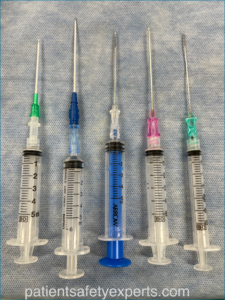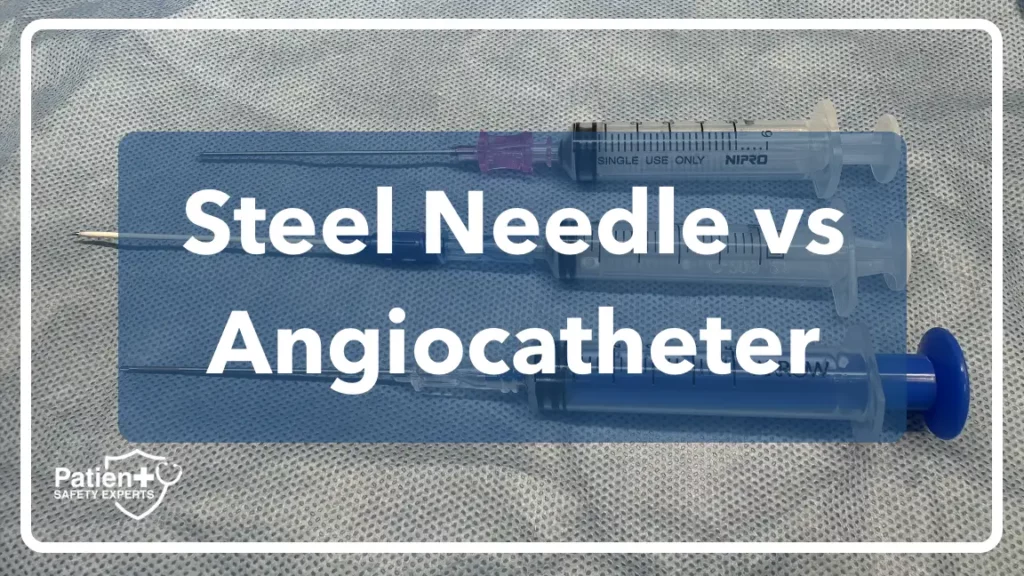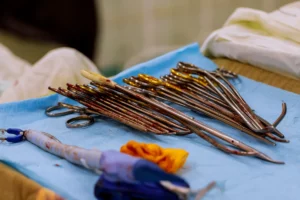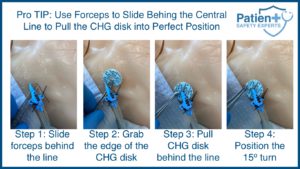Central line placement is as standardized of a procedure as you can find in healthcare. No matter the city or hospital, the steps are exactly the same without much debate except for the great divide; using a steel needle vs. an angiocatheter to access the vein.
If you are getting into a debate, it is important to know what you are really debating. The steel needle vs. angiocatheter debate is really a debate about the Seldinger Technique versus the Modified Seldinger Technique for central venous access.

The Steel Needle Club:
The steel needle club generally includes most EM and ICU docs as well as the surgical specialties. This also includes any provider for whom speed is of the essence.
This can lead to unintended arterial cannulation, hematoma, or other central line complications.
3 tips to make the Steel Needle, Seldinger Technique Safer:
There are techniques that we can use to make the steel needle central venous catheter placement safer.
The first step to improving your speed, safety, and success rate for central line placement is to know your anatomy. To learn more about central venous anatomy and how to perform ultrasound-guided central line placement see our courses:
Tip #1: Use ultrasound to guide needle placement.
While there are multiple benefits to ultrasound guidance, the simple use of ultrasound does not prevent accidental arterial cannulation.
In fact, the use of ultrasound for IJ central line placement can lead to sloppy technique and result in more arterial injuries due to improper needle direction towards the carotid artery as inexperienced staff start their needle insertion as far away from the artery as possible.
Proper needle direction away from the carotid artery as the needle passes deeper into the neck is fundamental to the landmark approach to IJ central line placement that is rarely taught anymore.
TIP #2: Use manometry to confirm the venous placement of your needle.
With the steel needle Seldinger Technique, this is harder than it sounds. The most common way of performing manometry with a short piece of IV extension tubing requires holding the needle absolutely still to prevent migrating out of the vein and into adjacent structures. The staff or residents who can do this consistently are highly skilled and it’s not a beginner’s technique.
Some sites use a T-piece with a pressure waveform monitor to confirm the venous placement of the needle tip before passing the wire.
There is also a device on the market that measures the pressure of the needle tip to let you know if you are venous or arterial.
TIP #3: Convert the Seldinger technique into a modified Seldinger technique.
This is done in a series of steps:
- Pass a wire through your steel needle that is in an unknown vessel.
- Remove the needle over the wire, while leaving the wire in the unknown vessel.
- Pass the angiocather over the wire into the unknown vessel
- Remove the wire from the angiocatheter and unknown vessel
- Perform manometry using the angiocatheter to confirm venous placement.
As you can see, If you are trying to be safe, this adds a lot of steps to what was a simple three-step technique. The solution is to use the modified Seldinger technique from the start.
Steel Needle Technique Summary:
Pro
- Fast, single-pass access
- Some needles are designed to be more echogenic for the ultrasound.
- A large-bore needle makes it easy to pass the wire
- Good for collapsable veins where cannulation can be difficult.
Con
- Large needle, large holes along the needle path.
- Difficult to perform manometry and not change position.
- Adding manometry adds steps
- Long needle encourages beginners to pass to deep for IJ technique
As you can see, there are a lot of things to like about the steel needle and I will turn to it in very difficult situations. The caveat is that I like to use a micropuncture needle that is 21 gauge instead of the 18 gauge needle that comes in the kit.
The Angiocatheter Club:
This is normally a smaller group at the hospital. It tends to be comprised mostly of Anesthesiologists and a few ICU and ED physicians who saw the light.
The angiocatheter, modified Seldinger technique is a little more complicated to learn at first, it is a more consistently safe technique than the steel needle, Seldinger technique
The most difficult part of the modified Seldinger technique is threading the angiocatheter off the needle once you have accessed a vessel. Without an understanding of how the angiocatheter is different than the steel needle, this can cause lots of challenges for beginners.
Angiocatheter, Modified Seldinger Technique Summary
Pro
- Single needle pass
- Smaller needle, smaller hole
Con
- threading the catheter
- more difficult the deeper the target vessel
Steel Needle vs Angiocatheter Summary:
Either technique works well and can be used safely. Like most procedures, you are safest when you know what you are doing and why you are doing it.
My general preference is to use the angiocather, modified Seldinger technique as my standard approach. If the patient is severely hypovolemic and the veins are completely collapsed, I will use the steel needle and cannulate the vein as I pull the needle back out, tenting the vein open.
To learn more about central line placement see our other posts:
- How Deep to Insert a Central Venous Catheter
- Comparing Flow Rates of Central Venous Catheters
- Should You “Double Stick” your Central Venous Catheters
- Comparing Central Venous Catheters: The Right Line for the Job
- Why you are struggling with the angiocatheter technique
What’s your preferred technique?












